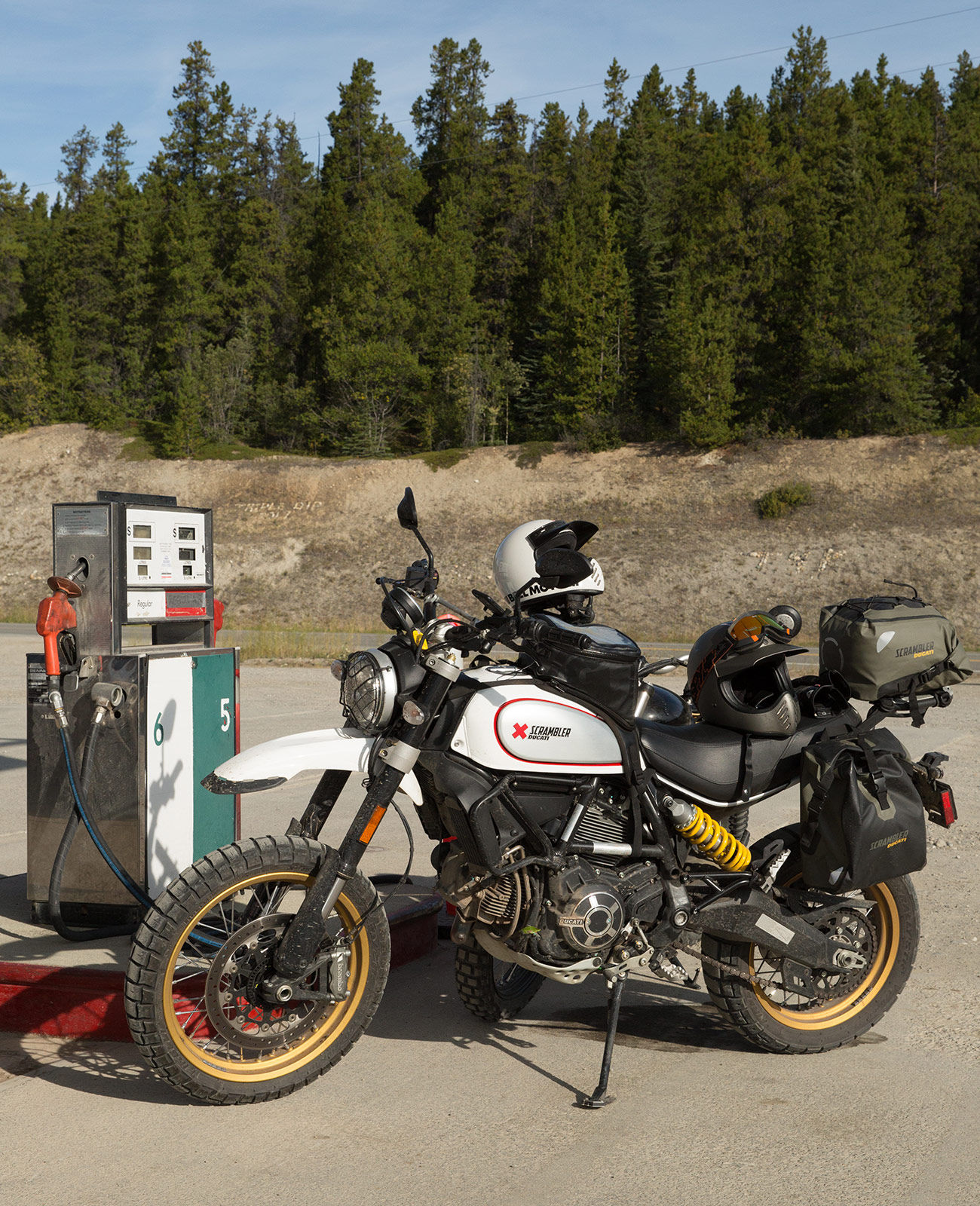There are only two types of wheels you’ll see rolling around underneath the average modern motorcycle: wire-spoked wheels and alloy wheels. From first commercial motorcycles in the early-1900s up until about the late-’60s, wire-spoke wheels reigned supreme. Then, in the ’70s, single-piece cast aluminum and magnesium alloy wheels skyrocketed in popularity. So if single piece alloy wheels were the latest and greatest, and are still the standard for road bikes today, why are manufacturers still using wire-spoked rims? The answer isn’t so cut and dry. Both wheel solutions have their advantages and drawbacks. Which one is better depends on what and where you’re riding.
Performance
Spoked wheels are all but mandatory on off-road bikes — dirt bikes, enduros, scramblers and ADVS — for one simple reason: spoked wheels are more durable than single piece cast wheels. On the road, while riding around on your street bike, you (hopefully) don’t encounter large rocks or massive ruts — maybe the occasional pothole, but nothing as unrelenting as a backwoods single-track, that’s for sure. Spoked wheels can bend and flex to a certain degree letting you tackle the rougher terrain.
Alloy wheels, because they’re more rigid, handle higher speeds and higher amounts of horsepower and torque with relative ease. The solid, unflexing nature also makes the single piece wheels more predictable in turns, especially at higher cornering speeds where stability and consistency are paramount.

Photo: Sung Han
Cost and Mainetance
When it comes to cost and maintenance, there’s a clear inverse relationship between the two types of wheels and the manufacturer and the consumer. Spoked wheels, due to their complicated architecture, still require human hands to connect the spokes from the rim to the center hub. It’s easy to see why that can be more expensive than an automated machine that effortlessly churns out thousands of cast alloy wheels a day. Alloy wheels are much cheaper and easier to produce on a large scale.
However, out in the wild, if you do send it too hard up a trail with your spoked wheels, dent a rim on a rock or bend a spoke, replacing the individual parts is simple and inexpensive. When it comes to fixing a flat, the majority of spoked wheels use inner tubes, making trail fixes — swapping tubes — a little more time-consuming. Conversely, if you slam into a curb or your alloy wheel gets swallowed by a pothole on the highway and it takes a dent or cracks, that’s an entire wheel that needs replacing. But, when it comes to flats, alloys are tubeless, meaning more often than not a flat can easily be plugged and you’ll be on your way in a matter of minutes.
So if you find yourself wondering which type of wheel to bolt on your bike, first ask where and how you’ll be riding. Of course, you can always choose spoke wheels purely for a vintage-style aesthetic; just know your form-over-function decision will have its drawbacks. Likewise, you can put cast alloys on your ADV or enduro and go off-roading, but you’re asking for a world of hurt.
